6. The Wrestler (2008)
D.P: Maryse Alberti
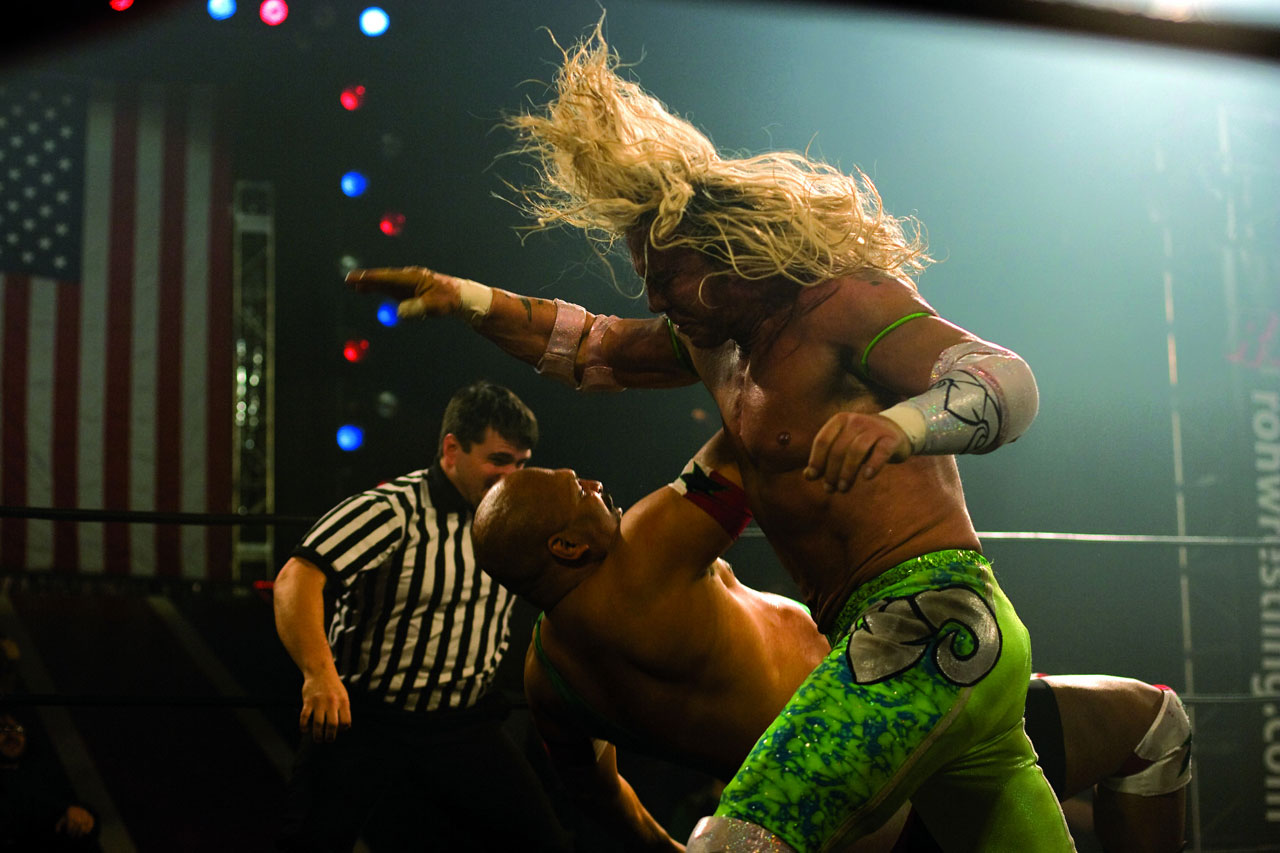
Despite being born in France, Alberti is based in the United States and has been active for over 30 years. She was the first contemporary female cinematographer featured on the cover of “American Cinematographer” for her contribution in Todd Hayne’s “Velvet Goldmine” (1998).
Darren Aronofsky’s 2008 sports drama has become a favorite among recent indie flicks, and it so happens to be one of Alberti’s finest examples to date. Starring Mickey Rourke as a professional wrestler in the territory days of wrestling in the ‘80s, the action and drama-packed film features unique cinematography and outstanding editing techniques.
Aronofsky and Alberti used a combination of different cameras, like the Arriflex 416 and Zeiss Ultra 16 with Angenieux Optimo Lenses. They shot in Super 16 for purely aesthetic reasons, embracing the grainy, edgier feel it gave. In heartfelt pleasant scenes, the lighting was high key in high contrast, and more intense scenes were darker, saturated with shadowing filters.
The greatest cinematography effort comes with the wrestling scenes, emphasizing wide angles and dolly shots to better reveal the choreographed moves of the wrestler and his opponents. Among the many liberties taken by director and DP is the breaking of the 180-degree rule and shooting from a high angle, in order to best highlight all possible moves represented in fighting sequences.
Back in 2008, Alberti was more accustomed to making documentaries – which led her to Aronofsky. At first, they considered shooting the film in documentary style and made the early decision of using the 2.4:1 aspect ratio to make sure that relevant backgrounds such as fans in the arena got the representation they deserved.
It was also decided that they would use handheld to cover the action and offer it a more spontaneous look. Alberti under-exposed images from two to three spots and recorded gorgeous natural looking details in both high and low lights. Every powerful scene in the film is only a fragment of what she brought in.
Additional Work: Alberti shot three key narratives in 2015 – Ryan Coogler’s “Creed,” M. Night Shyamalan’s “The Visit” and Peter Sollett’s “Freeheld.”
7. 8 Women (2002)
D.P: Jeanne Lapoirie
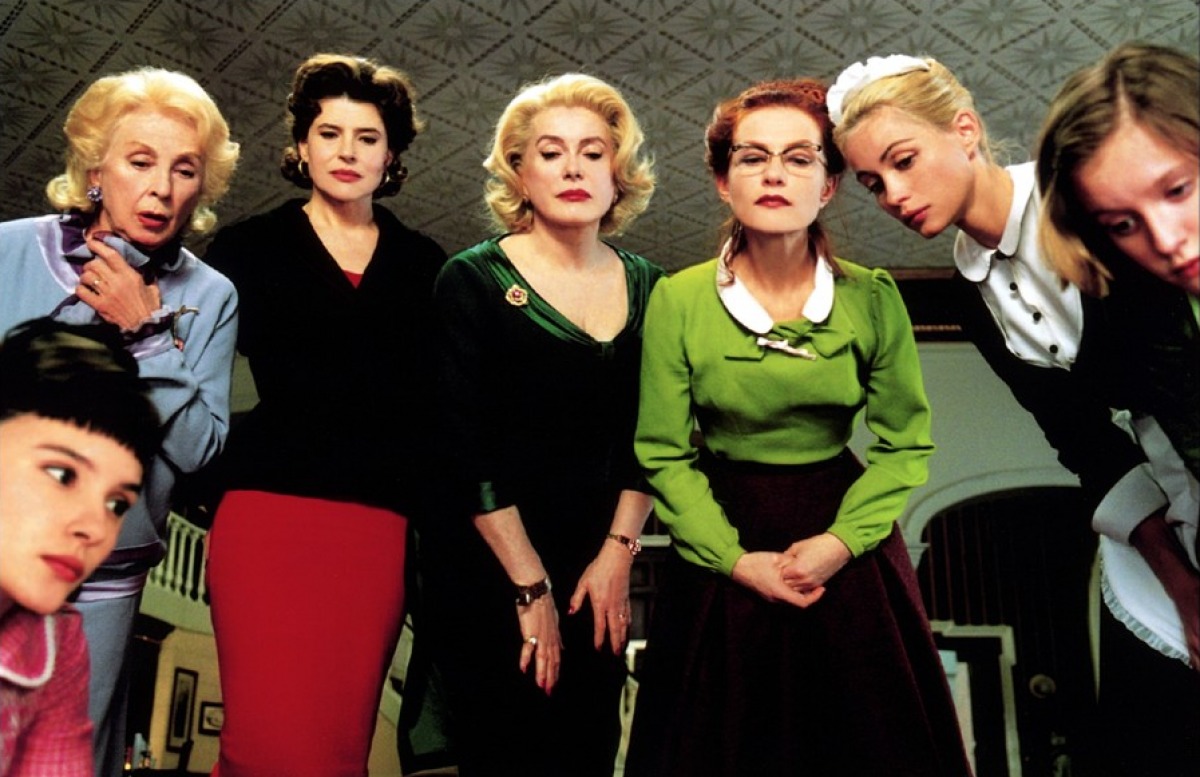
Based on the 1958 play by Robert Thomas comes the French dark comedy musical film by François Ozon featuring a glorious ensemble cast of French actresses Danielle Darrieux, Catherine Deneuve, Isabelle Huppert, Emmanuelle Béart, Fanny Ardant, Virginie Ledoyen, Ludivine Sagnier, and Firmine Richard.
The film follows the family of women and their employees in the ‘50s around Christmas time in an isolated cottage, where they find the family patriarch as a victim of murder. It was decided from the start that the film would recreate much of the play’s theatrical tone, also serving as an homage to these celebrity actresses’ particular filmographies and the history of film.
As a movie that is mainly for movie-lovers, there were numerous cinematographic contingencies to bear in mind. To really appreciate it, it’s important to know of traditional overdecorated studio musicals and the individual relevance of these actresses. Jeanne Lapoirie, who began her career next to the names of Luc Besson and Àgnès Varda, got the attention of Ozon and this ultimately allowed her to creatively consult and participate on a project that earned her first nominated for the César Award For Best Cinematography in the early 2000s. (Which happened again in 2013 for her work in another Ozon-directed picture.)
The spectacle of “8 Femmes” is partly owed to its luxurious palette and its boldness to the seemingly silky photographic quality. In this film, the viewer finds every detail that would appear in a ‘50s Technicolor melodrama, and the cinematography is essential to that feel – pink floral opening credits and all.
The camera follows the characters with great intensity, shuffling between close-ups and using classic three-strip Technicolor techniques to offer the needed sparkle in every scene. In this case, one can’t mention the cinematography without set and costume design, again making sure that color is everywhere. This is partly because the film almost directly recalls the cinema of Douglas Sirk, who was very fond of strong and lively colors.
For this, Ozon wanted his set to be beyond colorful. It is also another example of the wonder of the Cooke S4 Lenses and their possibilities. Lapoirie made the camera-work something unique with its combination of genres and peculiarity, and her talent is well exposed in it.
Additional Work: Keeping busy for the past decade, Lapoirie shot Arnaud des Pallières’s “Age of Uprising: The Legend of Michael Kohlhaas (2013)” and Eva Ionesco’s “My Little Princess” (2011) more recently.
8. The Hunt (2012)
D.P: Charlotte Bruus Christensen
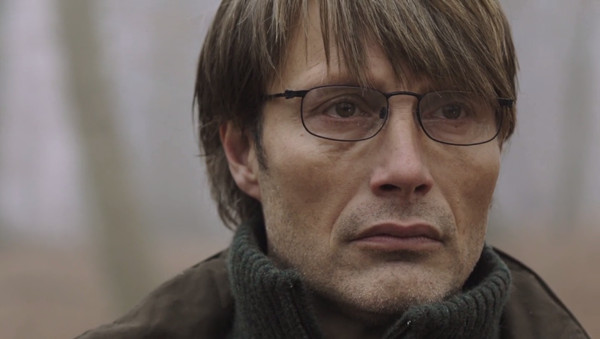
Danish cinematographer Charlotte Bruus began working on a number of short films following her return to Denmark after studying abroad in England. After being hired by Thomas Vinterberg, she became recognized and an influential DP in her home country and internationally. “The Hunt” (“Jagten”) earned universal critical acclaim and was nominated for an Academy Award for Best Foreign Language Film.
Set in a Danish village around Christmas time and regarding the highly controversial theme of child abuse, the director (Vinterberg) required it to be filmed in a realistic style, in order for the viewer to identify with the main character portrayed by Mads Mikkelsen. The Danish village had to look ordinary, so as to appear like any village anywhere.
The image couldn’t be pristine or pretty in cinematic terms, which meant that filming had to be done in natural sets and accurately capture the change of seasons from autumn to winter. The warm atmosphere that gets the film started unfolds into colder tones, changing with the narrative.
Natural light filtering through windows allowed a chiller look, contrasting warm interiors with the snow cold happening outside. About 75% of the scenes are outdoors, which meant DP Charlotte Bruus Christensen had to use HMIs in order to cheat the soft natural light that distinguishes Danish winters.
Alongside other examples on this list where the director wanted the film to be almost documentary-style, this resulted in Christensen carrying the camera on her shoulders for a long time. At first, there was the option of shooting in 35mm, yet there was no budget for it. This idea was replaced by the Arri Alexa, which made the DP adapt her style. She wanted to film with Cooke S2 lenses, but doing so would harm the feature, mostly for its sensitivity to the color red.
After doing some tests, she chose the new Cooke Panchros for their reproduction of a gentle vintage feeling. Also relevant was Vinterberg’s priority in lighting when it came to enhancing faces and eyes, which Christensen made happen with ease. She was instrumental in plot development, which would certainly lack power if it weren’t for Christensen’s smooth but spooky cinematography.
Additional Work: Christensen first worked with Thomas Vinterberg on his 2010 drama “Submarino” and after “The Hunt” they reunited a third time for the 2015 film “Far from the Madding Crowd.”
9. 35 Shots of Rum (2008)
D.P: Agnès Godard
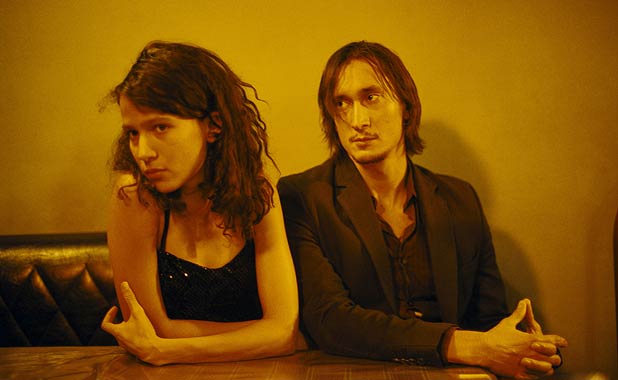
This quiet family study is greatly linked to its cinematography. When one of the main characters, the father, is a train driver working the commuter routes on the outskirts of Paris, it’s incredibly fitting that the cinematography is an homage to movement.
The film is filled with shots of crisscrossing rails, diverging and converging, shot by French DP Agnès Godard from an actual driver’s compartment with a handheld camera.
The director, Claire Denis, said it better than anyone when he mentioned Godard put “a rhythm inside a rhythm, with the movement of the camera and the movement of the carriage and the tracks.” These meditative shots, while seemingly conventional, are shot gracefully and mixed with Denis’s passion for textures and moods. Typically, Denis applies her poetic approach to vivid incidents, freeing the narrative of nonessential dialogue and rather focusing on the atmosphere.
Godard feels that faces and bodies are the richest landscapes, and it is visible in this film. The camera pans, score and hush minimalism are among its most admired qualities, and the editing is nothing short of beautiful either.
Similarly illuminated apartment blocks, the inside of trains lit up with pale yellow and blue hues while the camera lingers on the characters are only a few elements of Denis’s mesmerizing directorial style, made possible only thanks to her famous partnership with Godard. They used the 35mm camera Aaton 35-III, the lightest, low-profile sync-sound 35mm camera in the industry, with Cooke S3 and Zeiss Standard Speed Lenses.
The powerful combination of this director-DP duo allows “35 Shots of Rum” to be a great example of visual storytelling while still being more straightforward than Denis’s prior films. Godard as been Denis’ regular cinematographer for over 25 years.
In an interview with the New York Times, Godard mentioned that Denis has the notion that “the choice of a frame, a focal point, the climate of the light — says something, and the idea that gluing those images together is going to create a sense.” And “35 Shots” come as close to best representing that as anything they’ve done before.
Additional Work: Godard has nothing short of an impressive resume, and most of her work with Denis is recommended. However, the decision to include “35 Shots” was made difficult due to another incredible film she shot, the Swiss drama “Sister” (2012) directed by Ursula Meier.
10. L’Apollonide (Souvenirs de la maison close) (2011)
D.P: Josée Deshaies
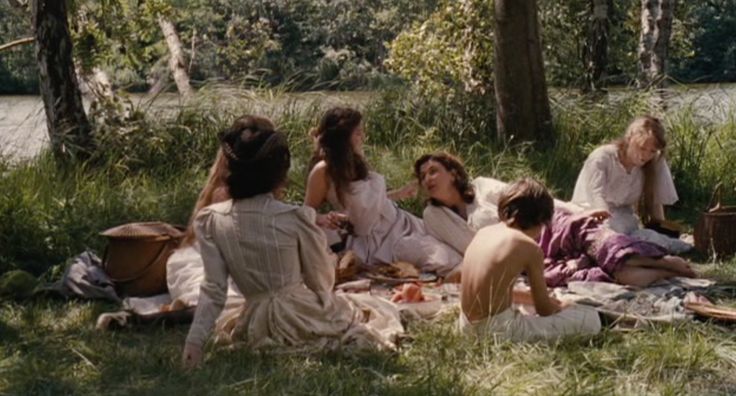
Also known as “House of Pleasures” or “House of Tolerance”, this film is completely different from anything else on this list. Set in a Parisian brothel at the beginning of the 20th century, its location is of utter significance to the narrative. The director, Bertrand Bonello, was joined by his wife-cinematographer Josée Deshaies to tell the story from the inside of the brothel, starting with the full detail of its luxurious rooms and filling it with possibilities.
The entire concept is both vague and straightforward, but the filmmakers used a lush 35mm for most of the scenes – all but the present-day part at the end, shot on DV. There’s no real notion of time and space, so an extra attention is paid to the portrayal of random moments, and that was where Deshaies’ work was more noticeable.
“L’Apollonide” is candid in its approach to intimacy, which required the right eyes to suggest just how oppressive and artificial eroticism was. A clear notion of time wasn’t included because every day in a house like that would appear the same, and everything else was pompous.
Things like money, makeup, hygiene, and STDs were given enough screen time because they were the most important things, but it’s the relationships, lives and togetherness of the girls in the house that make it such a visceral experience. Bonello has always had a taste for near-pornography cinema, and there’s a lot of flesh to see here, but there’s nothing truly erotic about it – on the contrary, it grows more tragic and unbearable as it reaches the end.
Deshaies knew exactly how to light the women and how to capture something powerful and turn her husband’s ideas into something darker and imperative. From the high-contrast candlelit shade to the exceptional images that stick with the viewer in the finale, there’s something all over it that we can’t quite find anywhere else.
The camera moved from room to room on a continuous set, excluding the need for cuts. Bonello wanted the focus on the girls in order to make them stronger, smarter and more important than their clients. Costume design (by Anais Romand) was crucial to better the work of the DP. These high-class prostitutes lived in a cage, and that included their own clothes. Being a very visual story, the lyricism that Deshaies brought to the cinematography is a pretty good reason to be blown away by this picture.
Additional Work: Deshaies recently won a lot of attention thanks to her fantastic cinematography in the 2014 film “Saint Laurent”, whose look is arguably one of its best qualities.
Author Bio: Alexandra Gandra is a Portuguese writer and filmmaker. She currently finished a master’s degree in Digital Audiovisual at the University of Aveiro. She spends too much time in cafés people-watching and putting sentences together, some of which can be found at medium.com/@gandra. She’s also writing a book she hopes to finish some day.